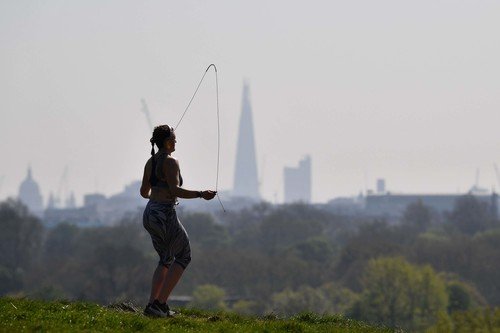Middle-aged Americans less healthy than English peers — and it doesn’t matter how much money they have

Middle-aged people in the United States are in worse health than those living in England, and the disparities are larger for low income individuals, according to a new study.
There is also a bigger gap in health outcomes between rich and poor in the US than in England, researchers from the University of Michigan and University College London found, according to a statement published Monday.
Rates of diabetes, arthritis, high blood pressure and mental health conditions among middle-aged high income individuals in the US are higher than among those in their 50s in England.
This is in spite of the fact that these individuals earn almost twice as much after tax as top income earners in England, with the top 10% in the US taking home $144,000 per year compared to $71,000 for the English.
It’s at the bottom of the income scale, however, that the biggest differences are noted, with English people in the lowest 20% income bracket in better health than the poorest US residents of the same age. This gap, moreover, could point to why Covid-19 has had a more devastating impact on low income Americans.
“It’s most shocking, and most evident, among low income adults,” said Dr. Kenneth Langa, a professor of internal medicine, gerontology and health management and policy at the University of Michigan Medical School.
High blood pressure, arthritis, diabetes, heart problems, stroke, chronic lung disease and mental health conditions were more prevalent among low income Americans than their English counterparts.
The gap between rich and poor
Health outcomes improved with income in both countries, but there were larger disparities between rich and poor in the US.
Both countries have an issue with inequality, but disparities are likely worse in the US than other high income countries, the researchers told CNN.
“The shocking difference between rich and poor in both countries is something to be addressed,” Langa said.
“It’s especially magnified in the United States, this rich-poor difference is even more of a public health emergency.”
The full study is published in the journal JAMA Internal Medicine and used data from two studies that looked at 13,000 US residents and 5,700 English residents from 2008 to 2016.
The disparities remained even when adjusting for factors such as gender, race and marital status, the researchers found.
They focused on middle-aged US residents because older people are eligible for Medicare health coverage. In the United Kingdom, everyone has access to health care under the National Health Service.
Impact of coronavirus on low income US residents
The findings may also help to explain why low income US residents have been hit harder by the coronavirus pandemic, explained Langa.
“A number of the disparities that we found between low-income and high-income Americans — such as a higher risk of diabetes, hypertension, and higher levels of inflammation — are likely contributing to the much higher risk for COVID-related complications and death among the poor,” he said.
Low income US residents are also more likely to struggle with shopping, cooking and managing their money than those with higher incomes, as well as English people with similar incomes, according to the study.
Financial stress can exacerbate worse health-related behaviors like smoking and an unhealthy diet, which can contribute to serious health problems, said the authors.
More worryingly, the situation looks set to worsen.
“Even younger cohorts than baby boomers, those in their forties, their health is really shockingly bad,” said HwaJung Choi, a research assistant professor of internal medicine at the University of Michigan Medical School.
Langa agreed that the US trends do not look good. “Things look bad now and are likely to get even worse,” he said.
To deal with these challenges, governments should work to reduce income inequality and improve other factors such as access to education and employment, Langa said.
“These are larger issues than just who’s getting healthcare,” he said.
The continued inequality even under England’s National Health Service shows that a holistic approach is needed, said the researchers.
“It should probably be beyond health policy,” added Choi.
There have been few studies making these kind of apples-to-apples comparisons, said the authors, but that looks set to change.
There are now more than 30 countries collecting data that will enable further comparisons of this kind as part of a network of studies.
Looking at these trends will allow researchers to work out the effects of public health policies, aging populations or health shocks such as the coronavirus pandemic, explained Langa.
The researchers will also expand the work from focusing on high income countries to lower income countries, including India, China and Mexico.


